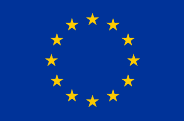
Safe non-food consumer Products in the EU and China
Fashion jewellery is a wide term used to describe non-precious items which are worn for decoration, and can include earrings, bracelets, anklets, beads, chains, pendants, piercings etc.
The most common risks identified in this product sector are set out below.
1. Chemical risks: Dangerous chemicals can cause short- and long-term adverse health effects if they exceed allowed limits.
2. Hygiene risks:
3. Mechanical/physical risks:
This is a list of common risks. However, the manufacturer has to carry out an assessment of the jewellery that covers all relevant risks that may be associated with the product and actions taken to mitigate these risks where possible. A general definition of risk and its relationship to hazards can be found in the factsheet on Risk management.
Specific examples of measures taken against dangerous fashion jewellery offered for sale in the European Union are available on the Safety Gate website. Type ‘jewellery’ into the free text search box (but without the quotation marks) to view notified examples. A better understanding of mistakes made in the safety assessment of these products or its manufacture can help avoid their repetition.
Many of these products were discovered on the EU market during the 2019 Coordinated Activities on the Safety of Products project funded by the European Commission. The outcome report of the work undertaken in this project in relation to fashion jewellery can be found here.
These products are governed primarily by the General Product Safety Directive (GPSD)
While manufacturers need to familiarise themselves with all the laws which apply to their specific products, the following summarises some further key applicable laws:
REACH (Registration, Evaluation, Authorisation and Restriction of Chemicals) – restricts chemical substances in goods: Understanding REACH – ECHA (europa.eu)
REACH places responsibility on the industry to manage the risks from chemicals and to provide safety information on the substances. Manufacturers and importers are required to gather information on the properties of their chemical substances, which will allow their safe handling, and to register the information in a central database.
There are no specific standards for the mechanical or chemical safety of fashion jewellery, the REACH Regulation does provide limits on the presence of certain elements, and there are associated testing protocols which may be used to determine this.
For jewellery intended for children under the age of fourteen, although the product is not considered a toy for regulatory purposes, it must still be safe for the intended consumers, who will be more vulnerable to product risks than adult users. Therefore, depending on the type of product, it may be appropriate to assess product risks against the harmonised standards for toys, as these provide a reference point for what is a safe product for children. This includes the following standards:
EN71 Toys, in particular parts 1 and 3 on mechanical and chemical safety.
EN 1811:2011+A1:2015
This standard provides the methodology for testing nickel release, but not the limits, as these are set down in the REACH Regulation.
Laboratories may use their own in-house methodologies for the determination of lead or cadmium contents, although the specific methodologies are also referenced in the REACH Regulation, which provides greater certainty in the outcome result.
Note: The full text of European standards can only be purchased from a national standardisation body. The following site of CEN (the European standardisation organisation) provides links to the national standardisations bodies’ websites. In addition, the China Standards Information Services Network can be used to access European standards.
Fashion jewellery is obviously a difficult product to label in practical terms, but where hazards need to be drawn to the attention of the user/wearer, some indication of these should be present with the product when it is supplied to the consumer, as well as an indication of details of the identity of the economic operator who placed it on the EU market and any batch or other coding details for traceability purposes.
Please refer to respective sections of the SPEAC FINDER regarding:
You may also visit the SPEAC ACADEMY to learn more about the EU Safety requirements.
The provided information was updated in 2022. Please note that some of the provided information could change during possible subsequent revisions of legislation, standards, and guidance documents. For any updates of official information on the EU product safety rules, please follow the Link to the webpage of the European Commission.
This document was produced with the financial support of the European Union. Its contents are the sole responsibility of SPEAC project and do not necessarily reflect the views of the European Union.

This website was created and maintained with the financial support of the European Union. Its contents are the sole responsibility of SPEAC project and do not necessarily reflect the views of the European Union.